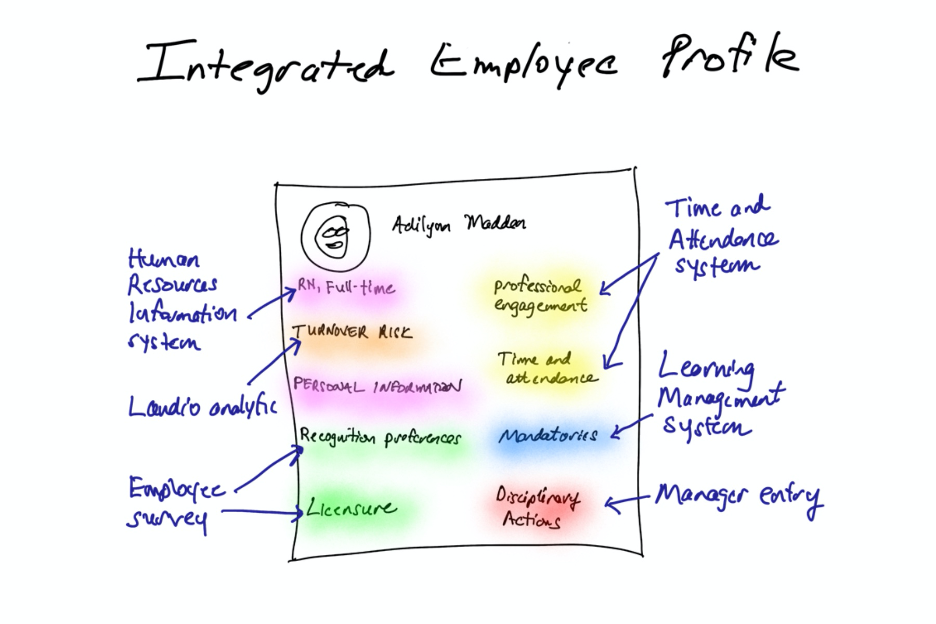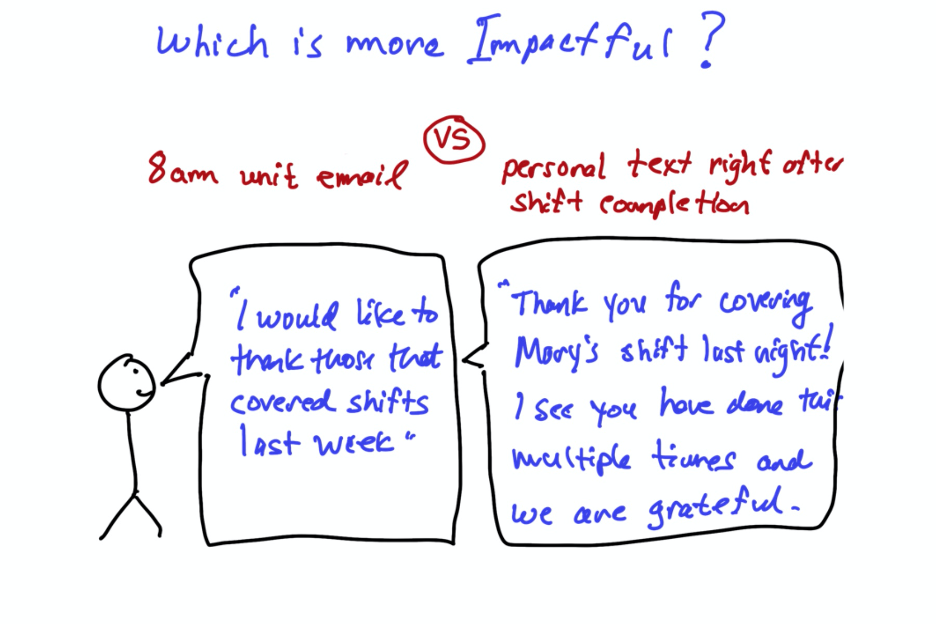The key to influencing human behavior is personalization and positive reinforcement
In my last blog post, I wrote about the management gap in healthcare, and that our company, Laudio, is working on it.
You might wonder how our 3-year old software is going to apply real torque to the healthcare management gap problem that has existed for decades? The answer is that we understand human behavior as it applies to health systems. We’ve spent thousands of hours in over 50 unique health systems. We are providers ourselves and we have backgrounds in risk analytics, nurse hiring and learning, marketing, and consumer applications. All of these have been combined to create Laudio.
What we’ve learned is that the key to influencing human behavior is personalization and positive reinforcement. This cannot happen without first appreciating that each employee, each team member, each co-worker, is unique. That’s why mass emails and staff announcements have limited ability to create change. The mass communication does not speak to a large percentage of us. However, each of us does have a time window when we are ready to listen, an angle of messaging that is most impactful, and a set of personal experiences that dampen or heighten our receptivity. These are the secrets of impactful personalization — the right timing, personalization, and relevance.
Data pipes build the richest profiles
Impactful personalization takes work. The pinch point in personalizing to achieve better results is the front-line manager. The issue is that they do not have time to personalize all their management communications. They’re just too busy. Especially in healthcare, frontline managers work on many truly urgent priorities. And, they have large spans of control, so their capacity to individually manage 20, 50, or 100 people on their team is structurally limited.
So, the work is building a profile for each employee out of readily available data sources, and this involves building data pipes. This is hard. The reason that very few solutions can do this is that building the piping between these data sources is technically difficult. So, most solutions rely on only data that they can physically collect themselves, which creates yet another data silo in the organization. And, that’s not helpful to anyone. A great example of this is a survey company.
type of solution is great at collecting data (from a survey), and one can even survey their own employees about their personal communication preferences in order to personalize communications. However, because this data is not connected to time and attendance data, the manager doesn’t know when that employee is working, or when they might work next. So, they are unable to personalize based on one of the most important elements — timing.
A better way is to help organizations leverage their existing data by piping that into the new solution, and then writing any incremental data back into their existing sources so that an interconnected ecosystem is created. This adds value to the data from existing systems of record and allows the end-user to save time. We are building Laudio to do just that.
The benefits of an integrated profile are immense
There are numerous benefits of creating an integrated, cross-system team member profile. The most important one is that this data can now be used to personalize and customize management for each team member, at scale. The personalization can be used to power positive reinforcement, which is the action pathway to changing behavior. Positive reinforcement, or praise, is so powerful that we decided to name our company after it. Laudio derives from the Latin root laudare which means “to praise”. Praising a coworker or employee in a timely, customized, and relevant manner is the most impactful way to increase impact.
There are secondary benefits of creating an integrated profile. Now that an integrated data set has been created, it can be used to ease the burden of the manager by creating an interconnected set of workflows and communication tools. This helps the manager because they can go to one place for most of their management tasks, rather than juggling multiple log-ins, user interfaces, and systems. This saves time, and we’ve heard from managers that this is the benefit they personally value the most.
Another benefit is that an integrated profile can be used to drive more powerful analytics and risk profiles. And that is the topic of my next blog post.
